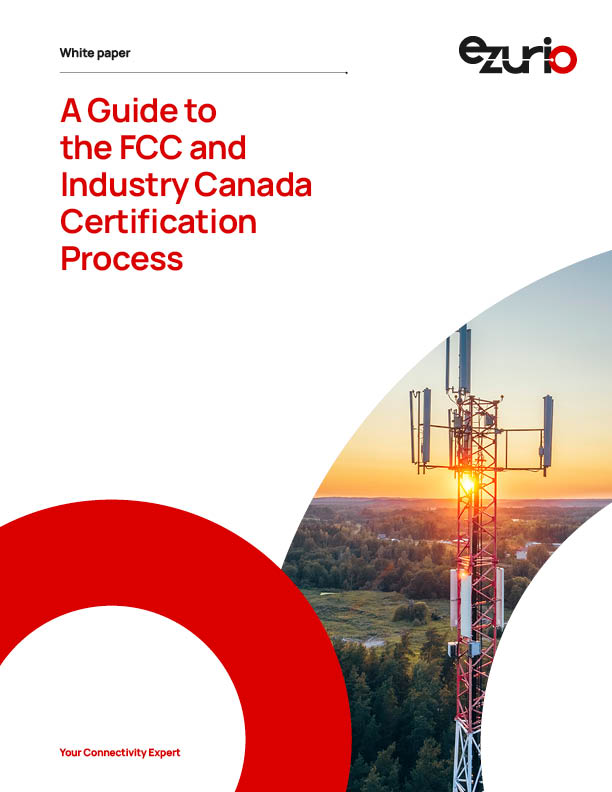Requirements for agency letters
Both the FCC and IC require an Agency Letter signed by the authorized signatory for each company. The letter simply states that the manufacturer acknowledges the appointment of individuals at the test lab to act as its agents in submitting the filing paperwork.
Confidentiality letters are also required
Both the FCC and Industry Canada also require the applicant to designate any information deemed to be confidential. When filings are complete, confidentiality letters are uploaded as public record and are therefore viewable online.
The FCC offers two types of confidentiality arrangements: permanent and short-term.
Short-term confidentiality is available for all items related to product certification. However, short-term confidentiality is limited to 180 days after the Grant of Authorization is issued. This essentially allows customers to maintain temporary control over sensitive information prior to the product launch or press release.
Permanent confidentiality is reserved for items or exhibits that are sensitive in nature, such as trade secrets or proprietary information. Some items do not qualify for permanent confidentiality, including test setup photos, external photos, and test reports. User manuals and internal photos may receive permanent confidentiality with expanded justification.
Industry Canada does not distinguish between short-term and permanent confidentiality. Items are simply marked Confidential when appropriate.
It is important that both the FCC and IC confidentiality letters match in terms of what is listed as confidential.
Additional documents required for Industry Canada
Industry Canada also requires several other signed documents. One of them, the Radio Equipment List, is an acknowledgment by the applicant that the information will be provided to Industry Canada and may be listed on the Industry Canada website. The letter also includes the applicant’s acknowledgment that any changes to the product must be documented and a notification sent to Industry Canada.
The second letter unique to Industry Canada is the Canadian Representative Letter, which provides Industry Canada with an in-country representative to act on behalf of the company if questions arise regarding the product application. For U.S. companies, the Canadian representative does not need to be a direct employee of the company; however, the representative must have their own company number. If your company is based in Canada, it is possible to have your company be both the Canadian representative and the grant holder. Let’s examine a few examples.
Example 1: LSR, a U.S. company based in Wisconsin, does not have a separate division or employee in Canada. LSR is then required to find a representative located in Canada willing to sign the Canadian Representative Letter and act on LSR’s behalf.
Example 2: LSR, a U.S. company based in Wisconsin, has a sales representative or another division in Canada. In this case, LSR would have two separate Canada Company Numbers: one for the U.S.-based portion and the second for the individual or division located in Canada.
Example 3: LSR is based in Canada. In this instance, a single Canadian Company Number would suffice for both the filing and the Canadian Representative Letter.
Additional technical documents
Additional documentation required for the filing includes the theory of operation, block diagram, schematics, and antenna data sheets.
The theory of operation differs from the product description. The theory of operation should provide an overview of how the product or module functions. It should highlight the specifications of the radio, including output power, channels and modulation type.
The block diagram is fairly self-explanatory. This diagram highlights key components of the product, particularly the radio communication aspect. One important element that is usually forgotten: crystal frequencies and locations must be highlighted.
For schematics, the latest revision should be submitted. It is important to include schematics for the entire product in addition to radio-specific portions. Schematics are generally compared against internal photos.
For external antennas, it is also necessary to supply appropriate data sheets.
User manual required
For both product and modular certification, a user manual is required. There are slight differences in requirements for each type of certification; however, key components in each are the FCC and IC warning statements regarding labeling, modifications and RF exposure. Also, when shipping to Canada, the user manual should include the French translation of warning statements; this is a new requirement as of December 2010.
8pt modular letter
The 8pt modular letter is applicable only for modular, limited modular, split-modular and limited split-modular certifications. The letter acknowledges and demonstrates compliance to the eight requirements regarding modular approval. Again, this letter needs to be signed by the authorized signatory for the company. Details of requirements for modular approval can be found in CFR Title 47 Part 15.212.
Ancillary information
A few ancillary documents and calculations required for the filing process include the emission designator, external photos, internal photos, test setup photos and MPE/SAR evaluation. Typically this information will be provided by the test laboratory, as it can be determined from test results or taken from test samples.
Conclusion
This article has highlighted the overall process and requirements for product and modular certification with the FCC and Industry Canada. As always, unique circumstances apply to each wireless application. Please feel free to contact LSR for further information and to generate a specific plan of action for your next product.


 Laird Connectivity is now Ezurio
Laird Connectivity is now Ezurio
